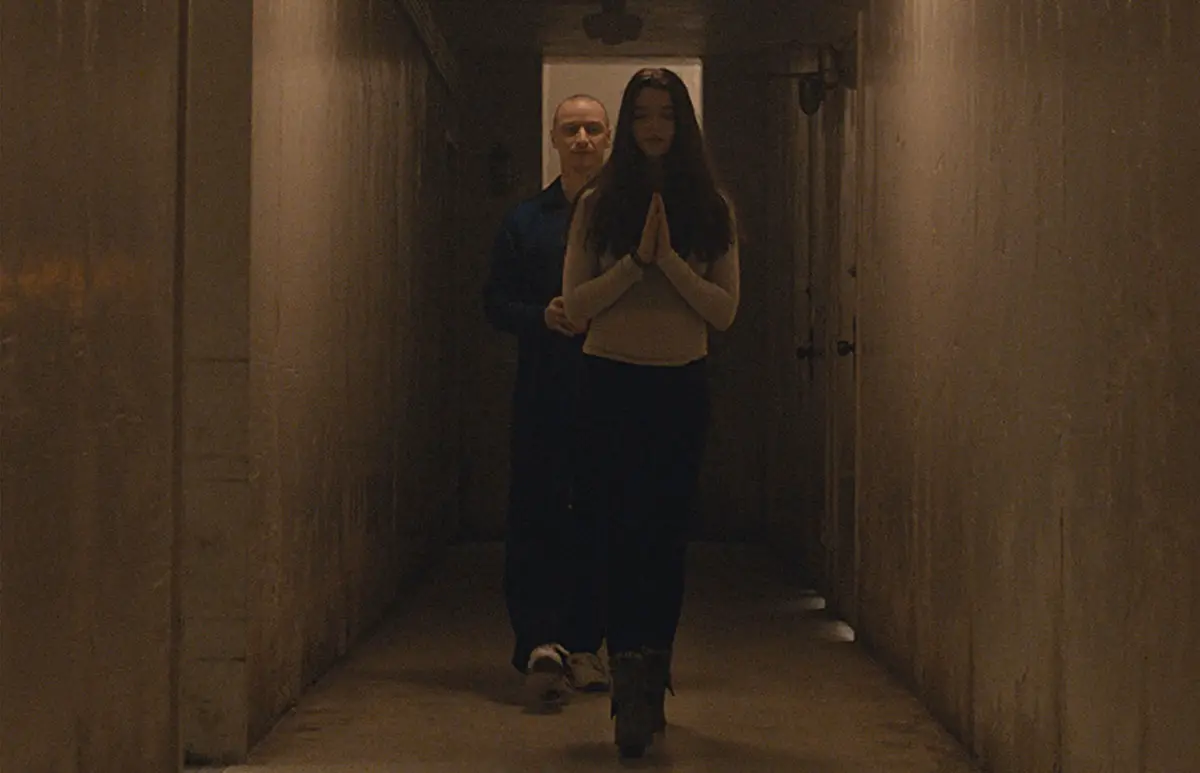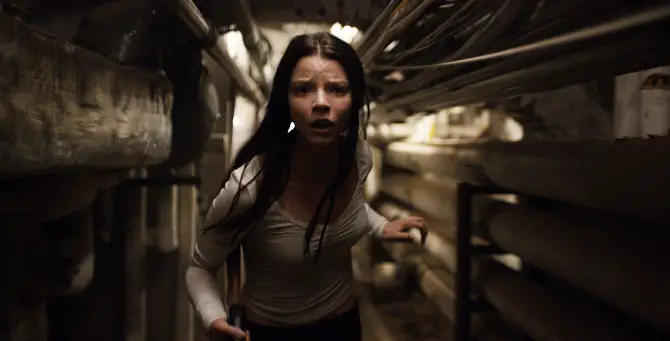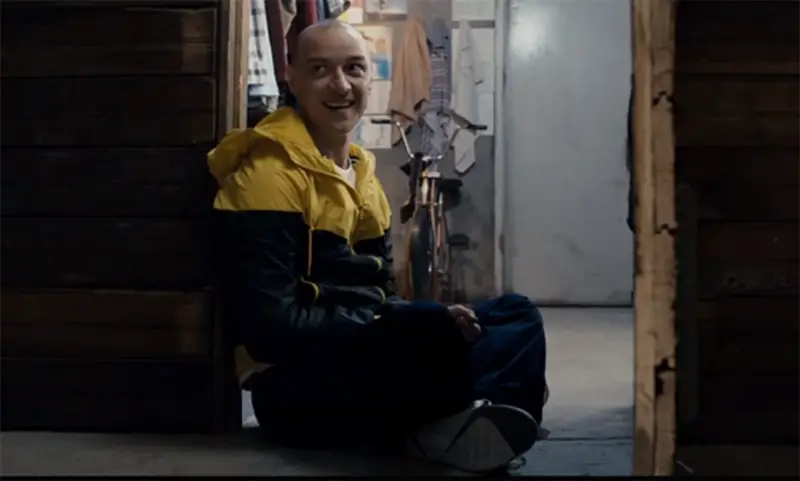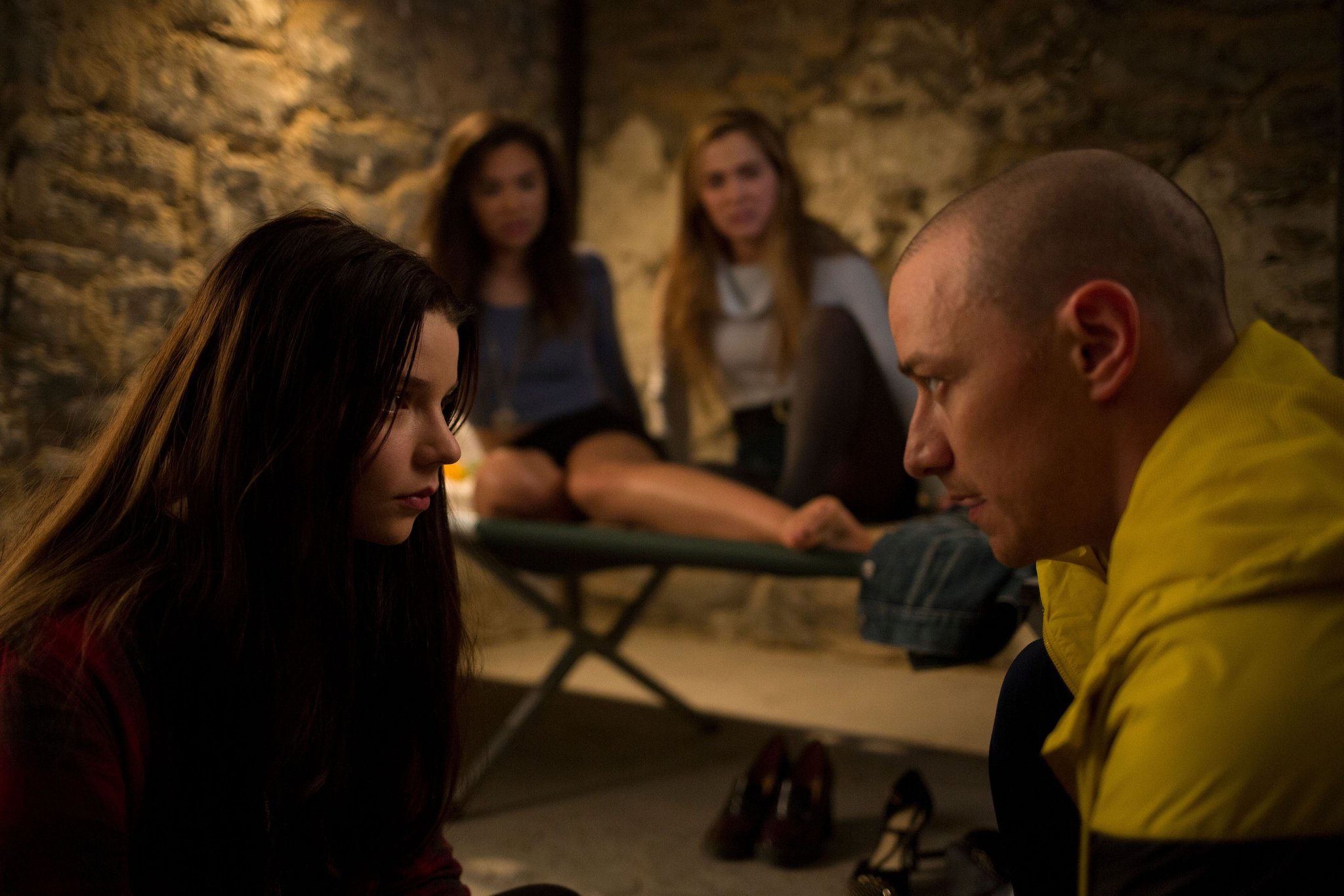“Split” Is Vague and Offensive for No Good Reason
M. Night Shyamalan’s blockbuster comes at a price more expensive than a movie ticket.
By Mary Kiser, Trident Technical College
“Split” is a new movie about one man, three girls and twenty-three personalities.
WARNING: Spoilers ahead!
The protagonist, Kevin (James McAvoy), suffers from Dissociative Identity Disorder (DID), a disorder characterized by at least two different personalities within an individual.
Kevin suffers from a severe case of DID, as his twenty-three personalities take turns vying for “the light,” or Kevin’s body and mind. However, only three distinct personalities play on loop.
The first, Dennis, is a perverse, middle-aged man with spectacles, a surgical mask and chloroform, but it’s his sexual proclivities that get him and his counterparts into trouble. During the film’s prologue, he kidnaps the teenagers Claire (Haley Lu Richardson), Marcia (Jessica Sula) and Casey (Anya Taylor-Joy) and locks them inside an underground room.

Patricia is the one to throw away the key, however. The matriarchal personality has a strict set of rules for the other personalities and the three young women to follow, but she’s not just a disciplinary figure; she’s a mirror image of Kevin’s biological mother, a woman with a short fuse and a quick hand.
When Claire, Marcia and Casey try to escape, Patricia inflicts pain through corporal punishment. Whether she’s locking Casey inside a room or threatening Marcia with a butcher knife, the abusive woman has no limits, grievances or fucks.
Patricia makes Hedwig, the nine-year-old little hellion personality, look like a teddy bear. He and Casey form a superficial bond based on a platonic kiss and Kanye West album, but when Casey tries to escape, he almost smashes her head in with his baseball bat.
Casey is caught by not Hedwig, but Patricia. The governess leads the defeated girl back to her enclosed space with “her hands folded in contrition,” as well as her spirits. Nobody can help her nor her classmates now, but Casey’s failure marks a turning point within the movie.
If the girls want to survive, they have to battle “the Beast,” a superhuman fusion of Kevin’s broken identities. Two of girls are unsuccessful in their attempts to vanquish it. Claire and Marcia are both ravaged by the monster, with their intestines splayed out as its meal’s leftovers. Their sheltered lives are their Achilles heel, but Casey’s weapon is not the shotgun she misfires, but her inhuman reality, living with a predatory uncle that’s sexually abused her for years.
Her life is literally saved because she exposes The Beast to self-induced cuts on her body, which shows the monster her literal and figurative scars. He realizes they share hardships, and it spares Casey her life.

M. Night Shyamalan’s “Split” attempts to address society’s taboo topics of mental illness, childhood trauma and sexual abuse, but the film falls flat and hits a low note. It introduces DID and its preexisting conditions to audiences, but it purports the age-old stigma surrounding the issues: fatal monstrosities that must, but cannot, be stopped.
“Though Shyamalan doesn’t use a lot of blood in ‘Split’ – there’s barely any – his framing sexualizes the torture of the other two teenage girls…and his depictions of childhood sexual abuse are clinically accurate enough to make anyone with experience of such things feel sick. All this is used in the most opportunistic way imaginable, to prop up astonishingly dumb ideas about the human psyche,” according to David Edelstein, a writer for “The Vulture.”
“Split” is littered with what critics say is Shyamalan’s “return,” “strongest work” or “the best M. Night Shyamalan creation in recent memory.” However, the film is nothing shy of a beast; it’s conniving, ugly and always twisting the knife. The best (and worst, unfortunately) example rests on the movie’s epilogue.
Casey escapes the monster only to find herself in the cold confines of a prowler. “Your uncle’s here,” the cop tells her. Will she go with him, or will she talk to the police? While the scene cuts, leaving viewers to use their imagination, Casey’s look of newfound determination and defiance gives them their answer.

For Shyamalan to suggest that The Beast’s victimization of Casey, a survivor of sexual assault, gives her power is both crazy and offensive. The most important question no longer centers on where The Beast is or why Shyamalan allows the victimizer to escape scot-free, even though they need answers, too.
So who is the underlying perpetrator: The Beast or Shyamalan?


















I hated this movie. As a victim of torture incest and all the other lovely things Im seriously offended that going through all of that that any directer writer would refer to me as PURE..that sufferers of mental disabilities or trauma would resort to crushing and eatting people and that those of us who experienced the worst of evil should then be exempt from the evil of this character?? What happened to you..I use to like your movies..theres NO EXCUSE for this one!! Its incredibly offensive!!!